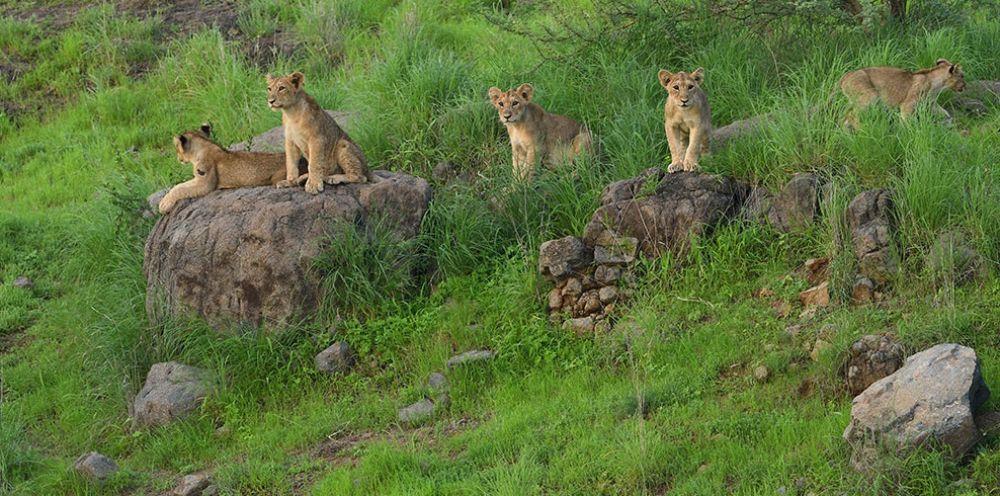

Gir National Park and Wildlife Sanctuary, commonly known as Sasan Gir, is one of India's foremost wildlife havens located in the state of Gujarat. It is renowned for being the sole home of the Asiatic lions and offers a distinct wilderness experience. Sprawled over 1,412 km², this sanctuary boasts a varied topography of deciduous forests, scrublands, grasslands and rocky hills, hosting a rich biodiversity.
The history of Gir National Park as a tourist destination is closely linked to the conservation of the Asiatic lion. Historically, Gir Forest was the hunting ground of the Nawabs of Junagadh. However, hunting was banned in 1960 when the lion population was perilously low. Recognizing the need for a dedicated conservation program, the area was declared as a Wildlife Sanctuary in 1965, and later, an even smaller portion, 258 km², was declared as Gir National Park in 1975.
The establishment of the park resulted in a gradual increase in the lion population. Seeing the success of the conservation efforts and the allure of the Asiatic lion, tourists started visiting Gir. In the subsequent years, Gir has become an eminent destination for wildlife enthusiasts, nature lovers, and photographers from around the world.
The Government of Gujarat, along with the Forest Department, opened up the sanctuary to tourism and began managing visitor access to promote eco-tourism and awareness about the conservation of lions. The creation of the Gir Interpretation Zone, also known as Devalia Safari Park, provides a quicker, albeit less natural, option for visitors to catch a glimpse of the Asiatic lion among other wildlife.
Guided Safaris: The most prominent trend in Gir tourism is the increased preference for guided safari tours. These tours are conducted in open jeeps, allowing tourists to explore the park with expert guidance, increasing their chances of wildlife sightings.
Eco-Tourism and Sustainable Practices: There is a rising trend towards eco-friendly tourism in Gir. New resorts and lodges adopt green practices, promoting nature-friendly tourism while providing modern comforts.
Digital Engagement: Online bookings for entry permits, accommodation, and safari tours have streamlined the visitor experience. Tourists can now plan and book their trips in advance, which is a significant change from earlier times when booking was more cumbersome.
Community Engagement: Increasing awareness of local culture and community-based tourism is also a trend where tourists engage with local tribes, learn about their lifestyle, and contribute to the community's economy.
Research and Education: Gir National Park is becoming a hotspot for wildlife research and education. Many educational institutes organize trips for students to learn about conservation efforts and the dynamics of wildlife ecosystems.
Gir offers various activities such as jungle trails, bird watching, and visits to the Kankai Mata Temple located within the forest. The best time to visit is from December to March when the weather is cooler and wildlife sightings are more common. However, the park usually remains closed during the monsoon season from mid-June to mid-October for regeneration of the flora and fauna.
Gir provides an immersive experience that not only puts one in touch with nature but also contributes to the conservation of one of the most magnificent creatures on the planet. The Asiatic lion's survival is a testament to the sanctuary's triumph as both a conservation project and a tourist destination.